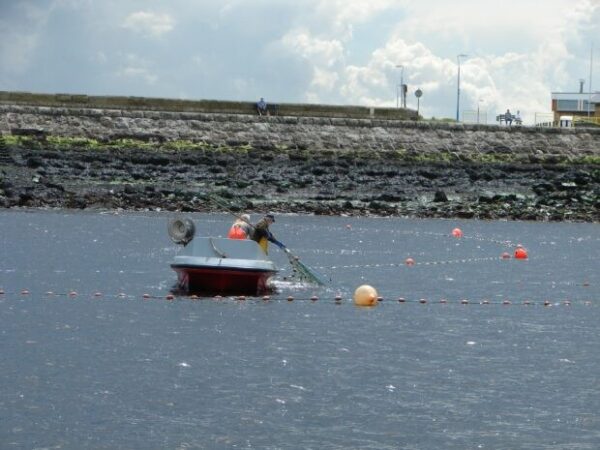There are many factors impacting salmon both within freshwater and the marine environment. Our changing climate is resulting in significant changes in the marine environment as well as driving warmer winter river temperatures. Other pressures come from marine and coastal fisheries exploitation, barriers to the free movement of salmon through our river systems and the habitat and water quality and flow in our rivers and estuaries which are all vital to salmon throughout their lifecycle.
Every year, the Centre for Environment, Fisheries and Aquaculture Science, the Environment Agency and Natural Resources Wales report on the state of salmon stock levels, to help determine any actions that need to be taken to protect this species. The latest Salmon Stock Assessment for 2022 shows that Wild Atlantic salmon stocks remain a cause for concern in England, with results showing a marginal improvement from last year.
Image source: Environment Agency
The latest results show that Wild Atlantic salmon stocks remain a cause for concern in England, with 85% of the 42 salmon rivers in England categorised as being ‘at risk’ (71%) or ‘probably at risk’ (14%). This is a marginal improvement from last year’s results which found 88% at risk.
Kevin Austin, Deputy Director for Agriculture, Fisheries and the Natural Environment for the Environment Agency said:
Today’s assessment of Wild Atlantic Salmon populations in England’s rivers remains a serious cause for concern. Although a great deal has already been done by EA and others to protect stocks here in England, climate change, marine exploitation and barriers to fish passage are all significantly impacting the numbers of salmon returning to our rivers to spawn.
Coordinated action between governments, partners and industry will be needed to alleviate the combined impact of these pressures and prevent the extinction of this iconic species in our lifetimes. The EA will continue to work with others and use our funding and regulatory powers to give salmon the best chance of survival.
Scotland’s Wild Salmon Strategy and Implementation Plan sets out commitment to protect and restore wild salmon populations, which are in decline. The funding will support the commitment to have a coordinated approach to monitoring wild salmon populations, building on our existing evidence base.
Over £500,000 in funding has been announced to support the protection and recovery of wild salmon populations.
The award will be used by District Salmon Fishery Boards and Fisheries and Rivers Trusts across Scotland to carry out monitoring of adult salmon populations and the sampling of juveniles through the National Electrofishing Programme for Scotland (NEPS). Additionally, it will allow an assessment of interbreeding of wild and escaped farmed salmon through the National Introgression Programme for Scotland (NIPS).
To read the Environment Agency blog click here.
The 2022 Salmon stock Assessment for England & Wales is available here.
To read to Scottish Government blog click here.
Scotland’s Wild Salmon Strategy and Implementation Plan 2023-2028 is available here
